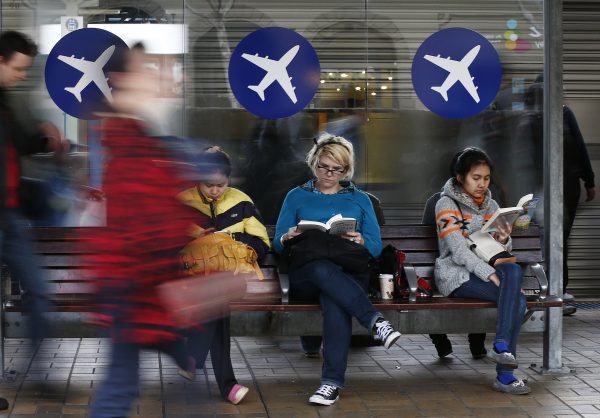The current migration system inefficiently supplies skills, exposes temporary migrants to underpayment and mistreatment and poorly serves the national interest. It has disintegrated to a point where the recent Parkinson Review of the Migration System and Home Affairs Minister Clare O’Neil declared it ‘broken’ and in need of an overhaul.
The Parkinson Review identified three general principles to return to a sound migration system: tripartite involvement of unions and employer associations with government in designing and implementing policy, universality of regulation for migrants and mobility for migrants to transfer between employers. The government announced it will now undertake a major reform of the migration system using input from the Parkinson Review.
The government’s single concrete immediate policy announcement in response to the review was increasing the Temporary Skilled Migration Income Threshold (TSMIT), which was justified on grounds that it would help reduce exploitation of workers. This policy increases the effective minimum pay rate for some classes of migrant workers from AU$53,900, where it has languished since 2013, to AU$70,000. That means employers sponsoring temporary migrant workers under the Temporary Skill Shortage scheme from 1 July 2023 must pay a minimum annual salary of AU$70,000. This is a compromise between recommendations from business groups — AU$63,000 — and the Australian Council of Trade Unions — AU$90,000.
The government has stated that simplifying the migration system, delivering skills needed by business and reducing exploitation of migrant workers are its main priorities. Many of the Parkinson Review’s recommendations will help achieve these goals. Recommendations such as removing restrictions on temporary skilled migrants’ mobility between employers and independent assessment of skills demand are helpful. But other recommendations potentially undermine them, such as continued reliance on the TSMIT and creating three tiers of temporary labour migration. This may further complicate the system, reduce labour supply and maintain exploitation.
Historical and comparative research suggests that the government’s goals can be best achieved by strengthening ties between migration and employment regulations. Many problems with the migration system can be traced back to the expansion of temporary visas in 1996. Prior to this, the migration system was relatively simple. It supplied skills to business efficiently and migrant worker exploitation was lower. Complementary migration and employment regulations contributed to these outcomes.
Three changes would better align migration and employment regulations.
First, abandon the TSMIT pay threshold. Minister O’Neil’s headline policy announcement — raising the TSMIT — places excessive faith in salary level as a measure of skill and worker power. The Parkinson Review’s recommendation to build a three-tier system of employment regulation around salary levels does likewise on the basis that those workers paid above the TSMIT are likely to be at limited risk of exploitation. The policy focus should not be on the level of the threshold but its very existence.
For many years, Australia’s Minister for Home Affairs has had the power to set the TSMIT, resulting in pay rates being determined by political considerations rather than labour market assessments. This contrasts with the methodical and transparent way the Fair Work Commission’s Expert Panels set minimum wages.
Maintaining the TSMIT risks reinforcing separate labour markets for migrants and citizens, undermining the government’s objectives. An increased TSMIT could also price out some skilled jobs in sectors with pronounced labour demand, such as health, social care and hospitality. This would likely generate political pressure for new job-specific visas to address Australia’s skill needs, further complicating the migration system.
Second, independently assess skills needs. The Parkinson Review recommended using Jobs and Skills Australia, a new Commonwealth agency, to better align migration and labour market regulations. This agency will help to ensure migration better complements the education and training system. For decades these policy areas have been at cross-purposes, despite their mutual objectives of supplying necessary skills.
Using Jobs and Skills Australia to strengthen coordination between migration, on one hand, and education and training, on the other, will help ensure skills and workforce needs are assessed and addressed more reliably. This approach will give employers more confidence to invest in developing their workforces.
Third, enforce employment regulations more effectively. Without this, unscrupulous employers will continue to underpay and mistreat vulnerable temporary migrants, gaining a competitive advantage over honest operators. Without effective enforcement, businesses are discouraged from seeking to succeed through quality, innovation and productivity improvements, which are essential for Australia’s international competitiveness. The assumption that a certain level of pay in the TSMIT and a proposed higher-paid visa tier equates to individual worker power to resist underpayment is misplaced.
In implementing the Parkinson Review’s recommendations, the government must ensure migration regulations are better integrated with wider employment regulations. This will help achieve the government’s triple goals of simplifying the system, supplying skills more effectively and reducing worker exploitation. This will ensure the migration system continues to support Australia’s international standing as a successful ‘nation of immigrants’.
Stephen Clibborn is an Associate Professor and Co-Director of the Sydney Employment Relations Research Group at the University of Sydney Business School, University of Sydney.
Chris F Wright is an Associate Professor and Co-Director of the Sydney Employment Relations Research Group at the University of Sydney Business School, University of Sydney.


Maintaining Australia’s status as an immigration nation is crucial for the country’s continued growth and development. With a rich history of immigration, Australia has thrived on the contributions of people from diverse backgrounds, cultures, and skills.
Emily, UK